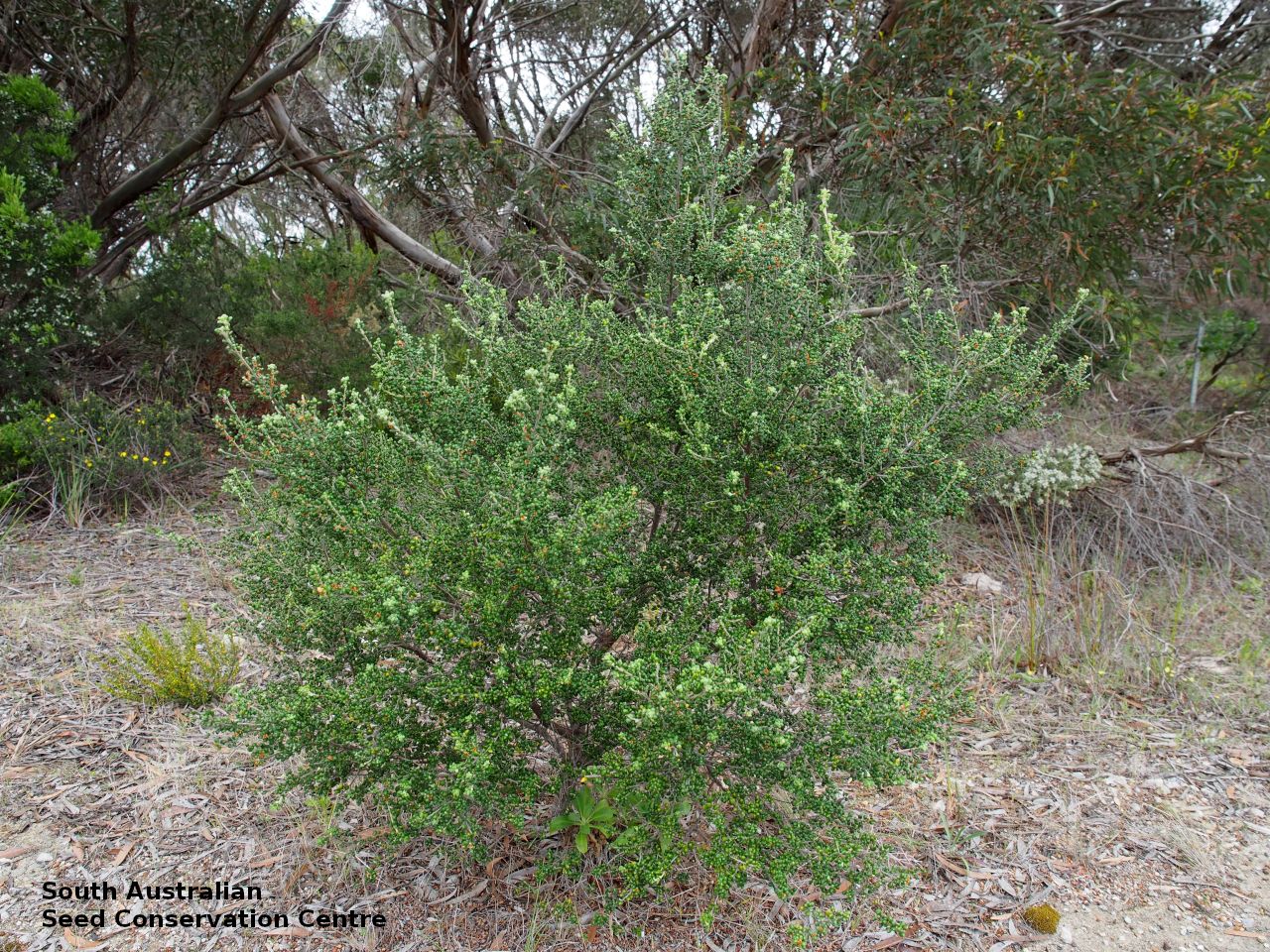
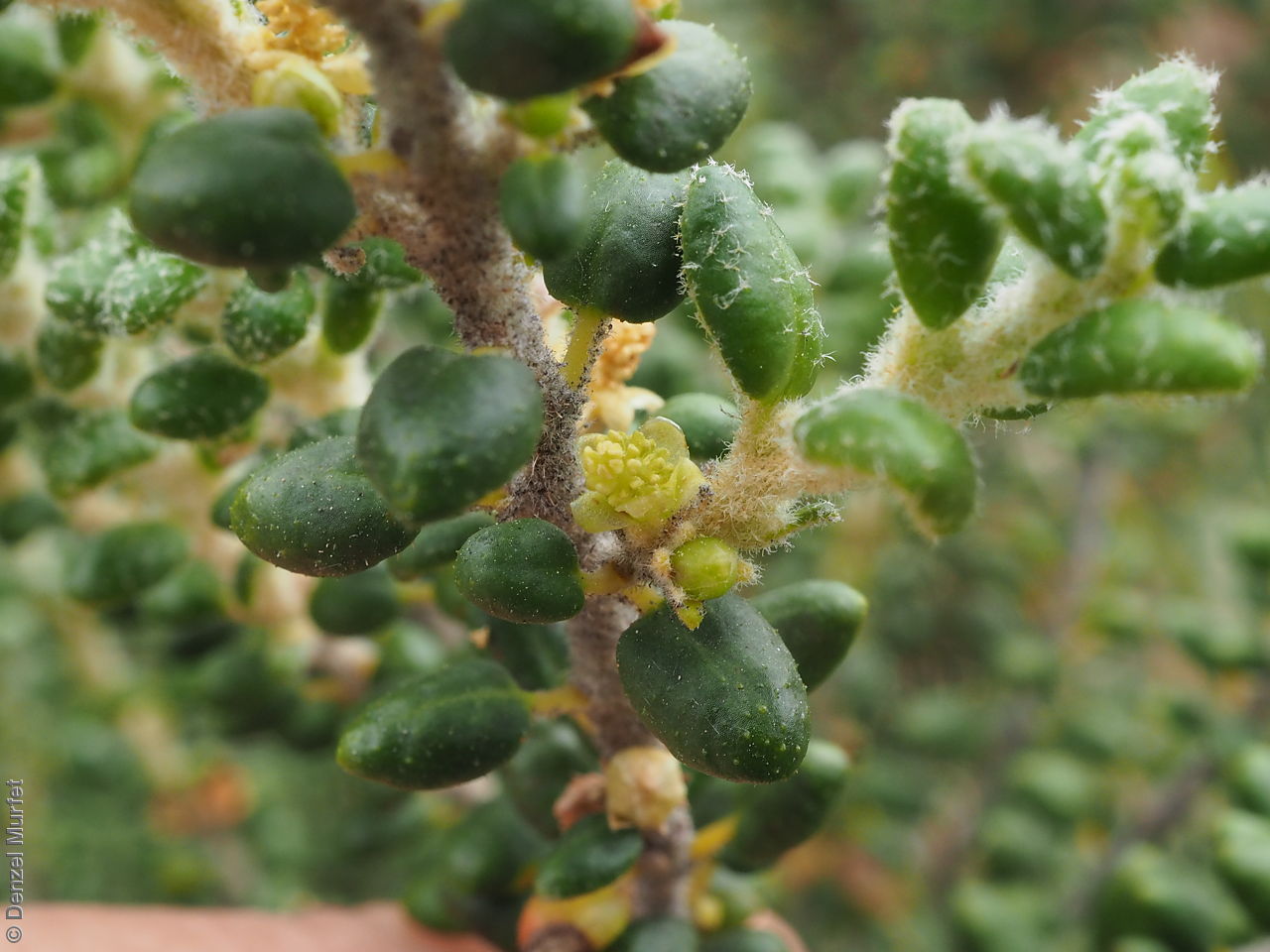
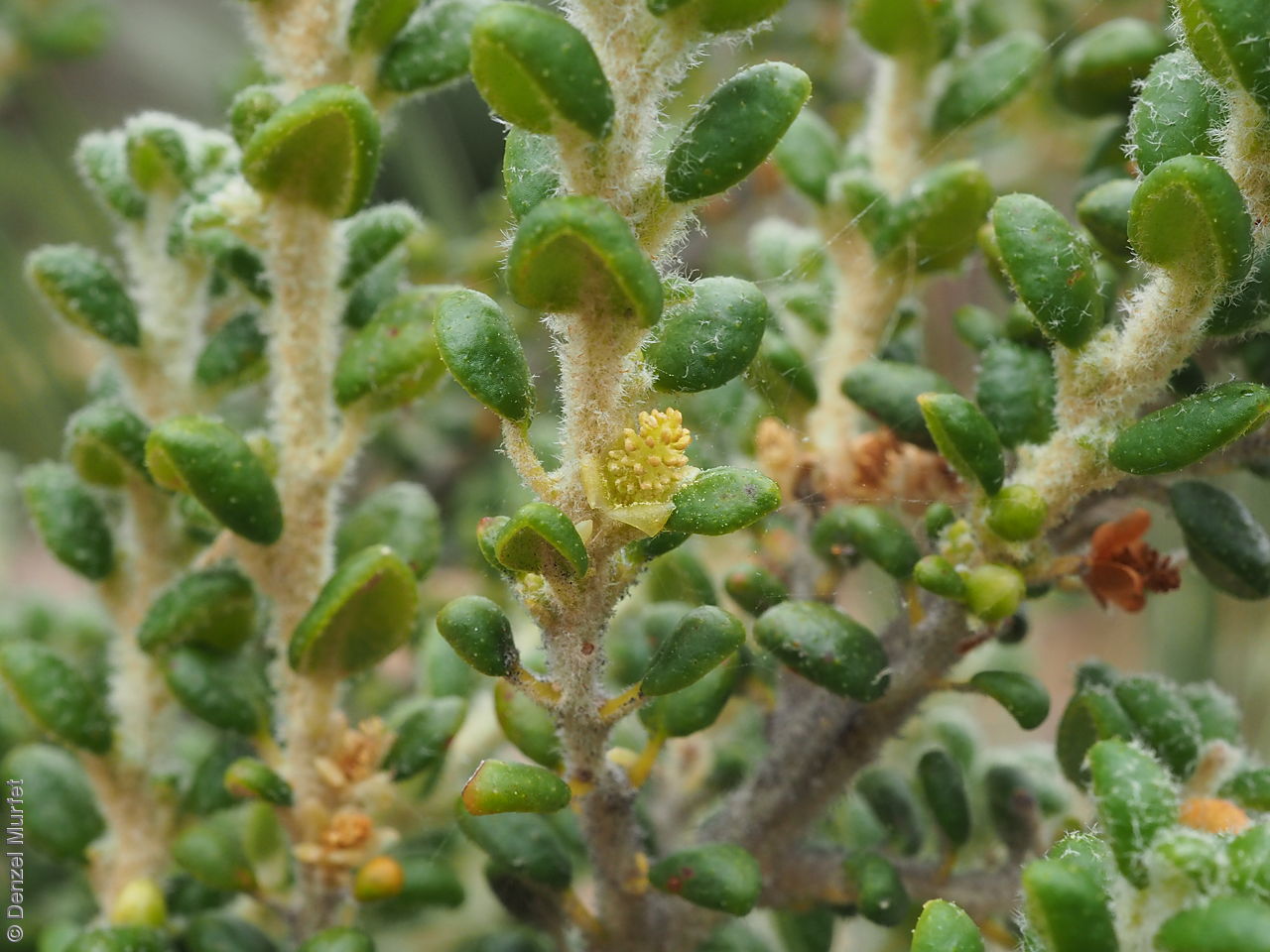
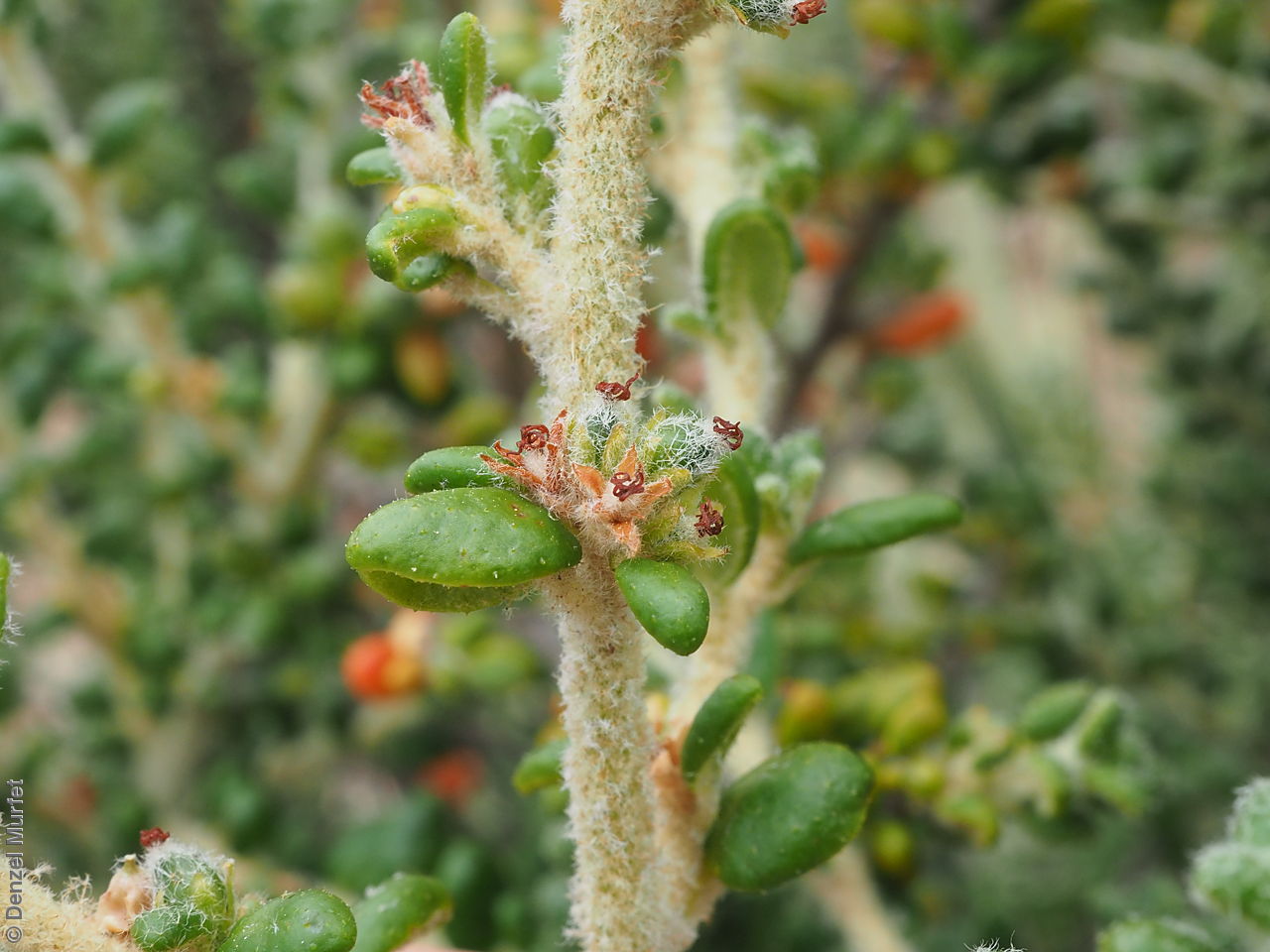
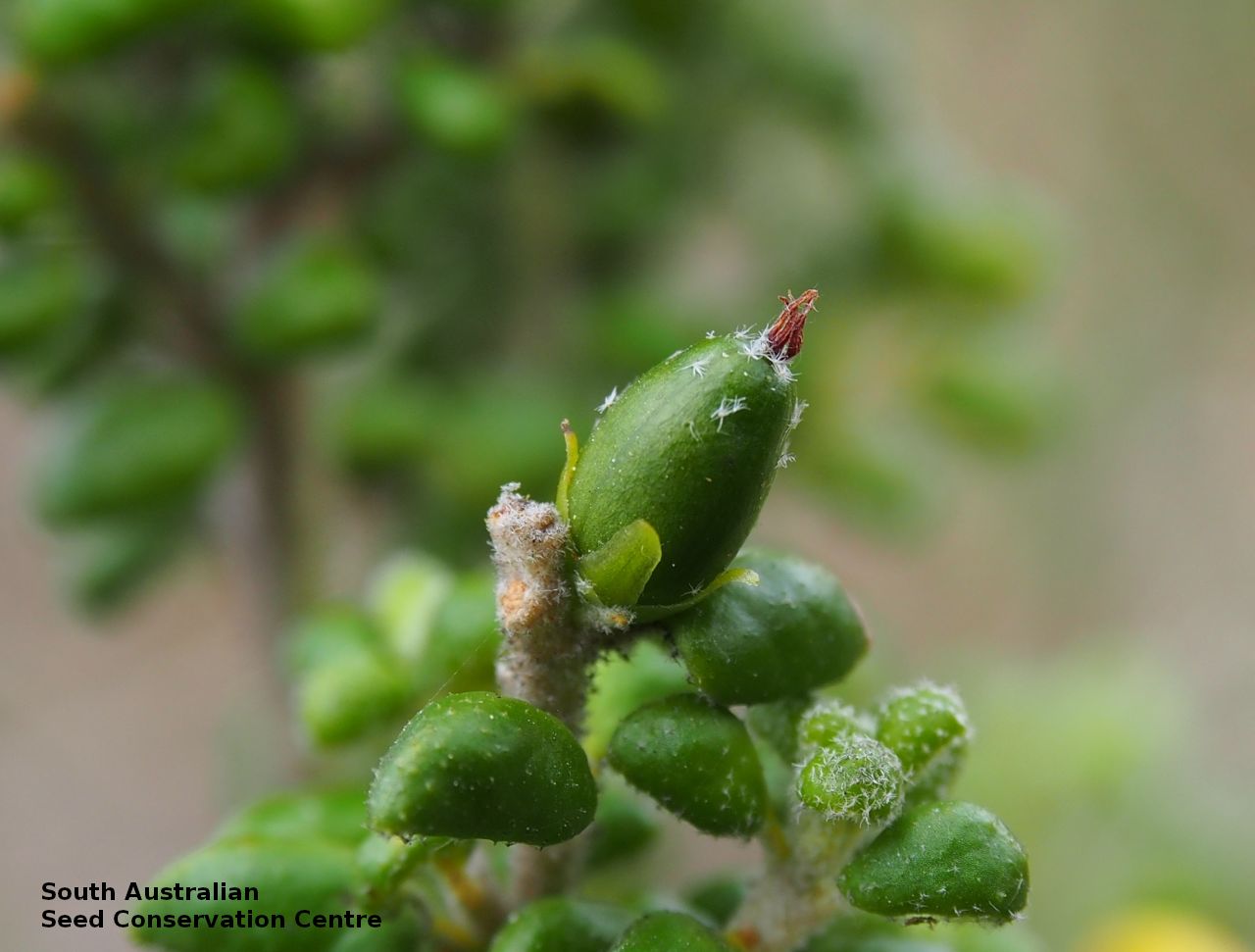
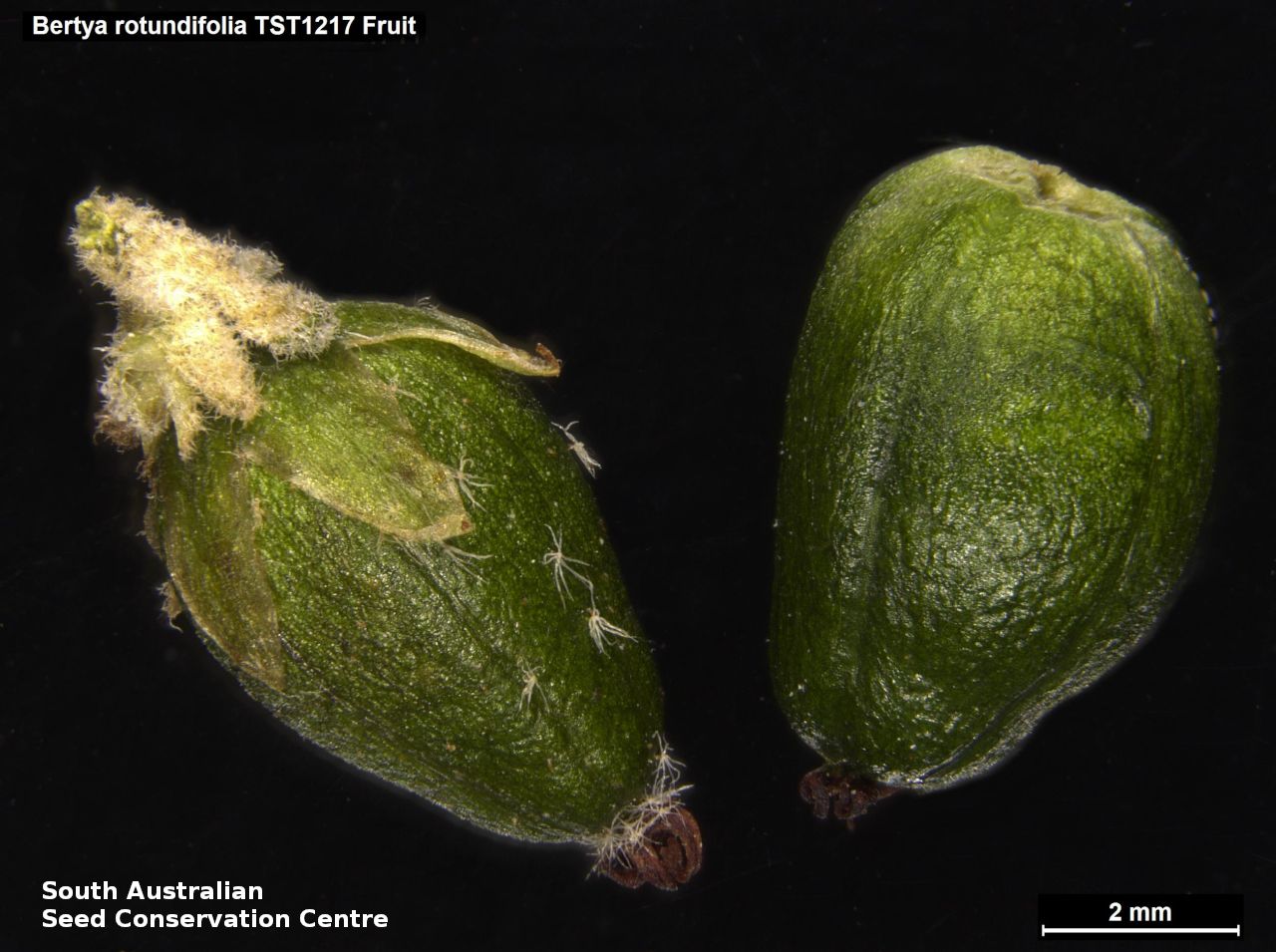
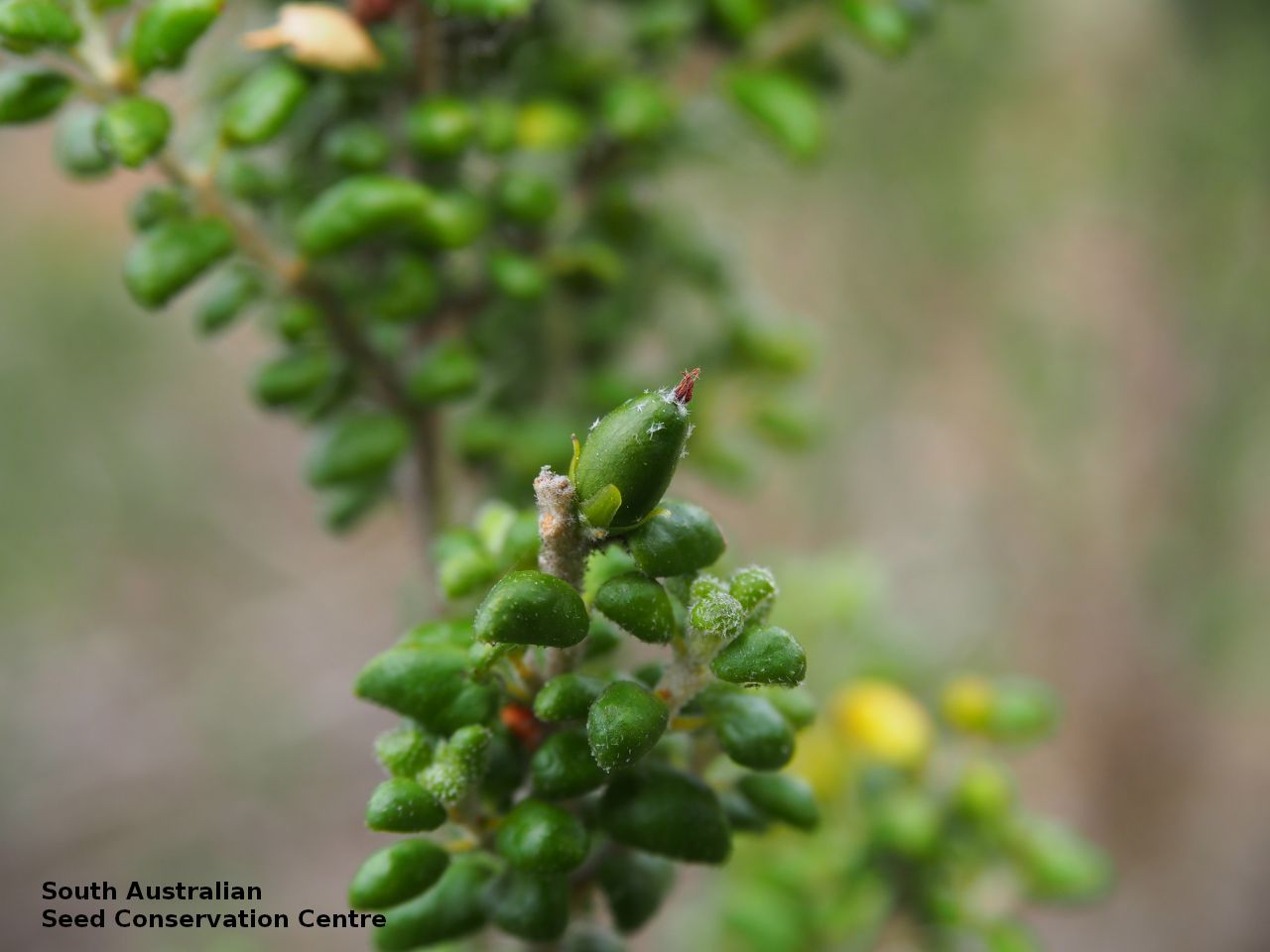

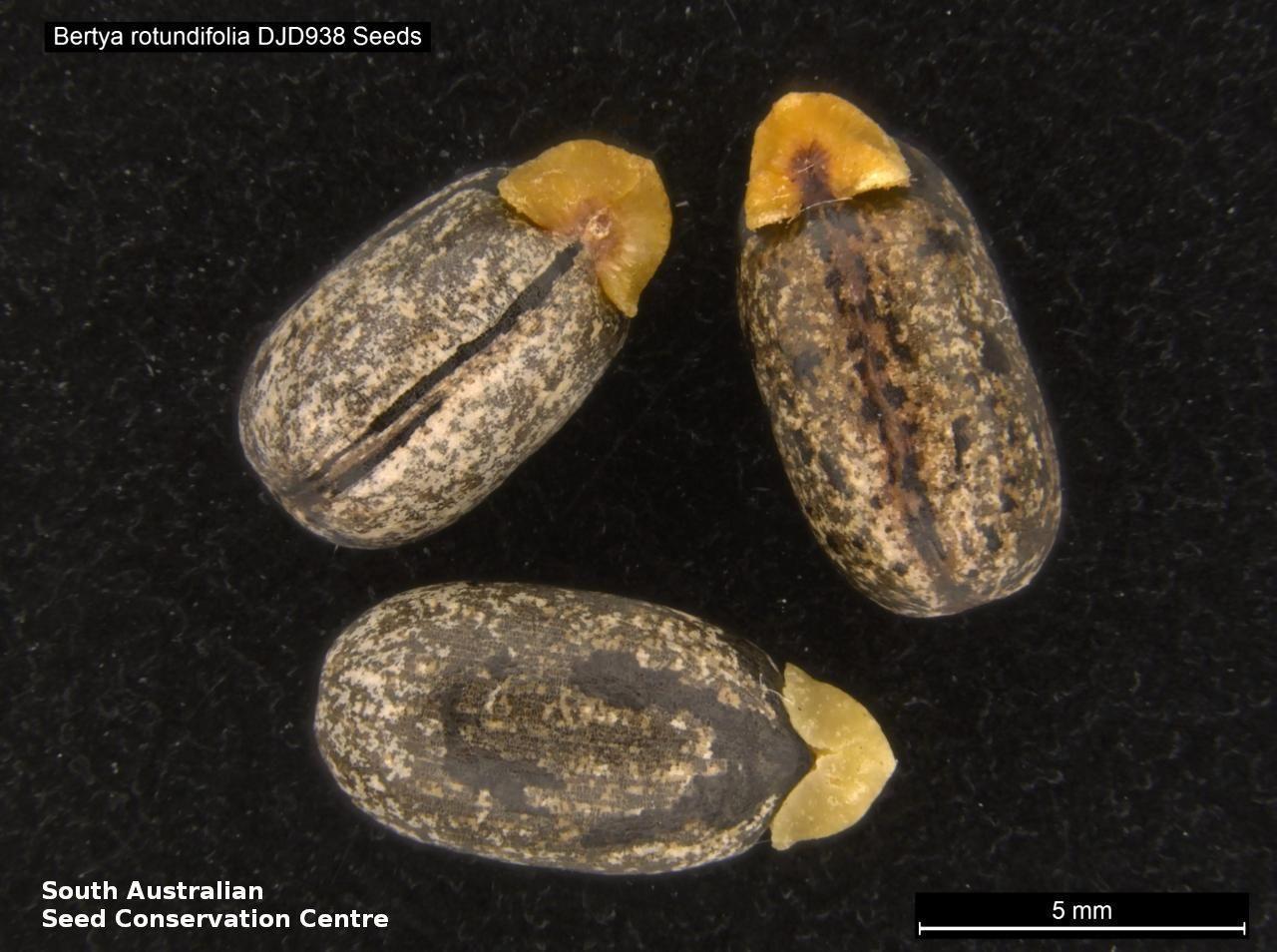

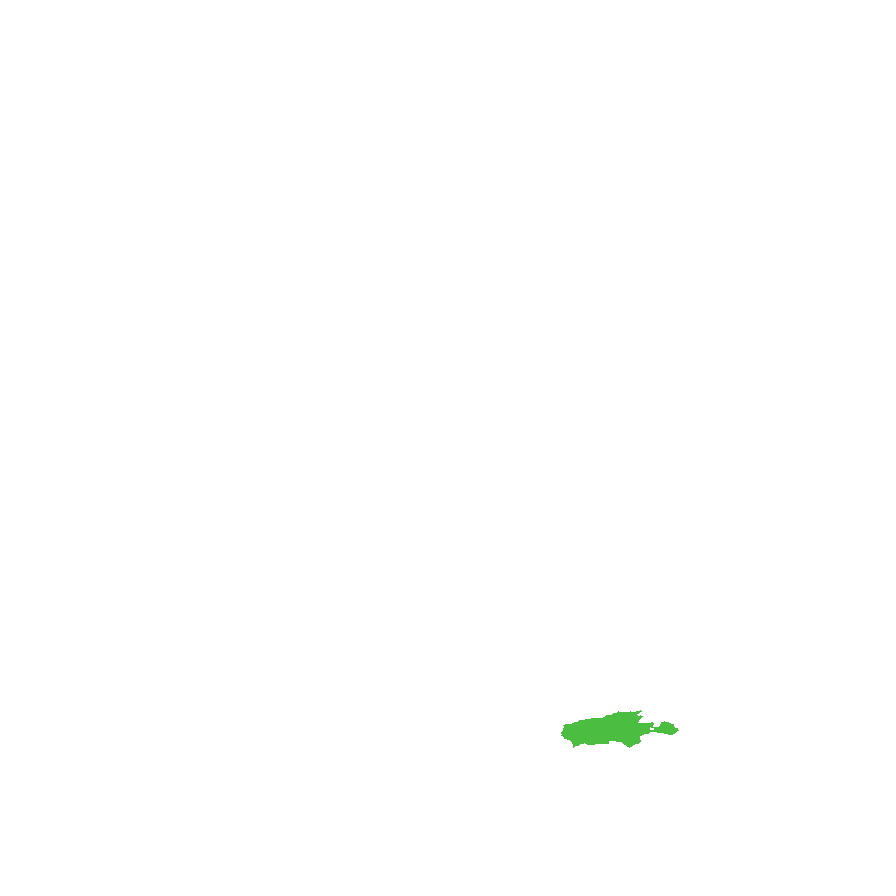
Botanical art
Common names
Kangaroo Island Bertya
Round-leaf Bertya
Etymology
Bertya named after Count Léonce de Lambertye (1810-1877), a French botanist and horticulturist at Chaltrait. Rotundifolia from the Latin 'rotundus' meaning round and 'folium' meaning a leaf, referring to the species having rounded leaves.
Distribution and status
Endemic to South Australia and found only growing on laterite soil, on the eastern side of Kangaroo Island, . Native. Rare in South Australia.
Herbarium region: Kangaroo Island
NRM region: Kangaroo Island
AVH map: SA distribution map (external link)
Plant description
Low shrubs to 2 m high with ascending stems covered with in dense grey to light brown hairs. Leaves on short stout pedicels, ovate or orbicular to 10 mm long with recurved margins, becoming hairless above; concave and covered in white hairs below. Flowers brown, leathery, solitary. Flowering between August and October. Fruits are green ovoid to oblong capsule to 6 mm long and 3.5 mm wide. Seeds are mottled brown oblong seed to 8 mm long and 4.5 mm wide. Seed embryo type is spatulate.
Seed collection and propagation
Collect seeds between November and December. Collect mature capsules, fat, dull green and contain dark, hard seed. Keep a close eye on maturing fruit as it will quickly open and release the seeds. Place the capsules in a tray and leave to dry for a week or two. Capsules will split and release the seeds or you can gently rub the capsules with a rubber bung to dislodge the seeds. Use a sieves to separate the unwanted material. Store the seeds with a desiccant such as dried silica beads or dry rice, in an air tight container in a cool and dry place. Seed viability can be variable and seeds are prone to predation. From one collection, the seed viability was high, at 80%. This species is generally difficult to germinate, it has morphophysiological dormancy and complex germination requirements.
| Location | No. of seeds (weight grams) | Number of plants | Date collected | Collection number Collection location | Date stored | % Viability | Storage temperature |
|---|---|---|---|---|---|---|---|
| BGA MSB | 1,035 (22.5 g) 1,035 (22.5 g) | 100 | 12-Dec-2004 | MKJ50 Kangaroo Island | 28-Mar-2006 | 80% | -18°C |
| BGA | 1,048 (13.78 g) | 8-Nov-2007 | DJD938 Kangaroo Island | 1-Jan-2012 | 30% | -18°C |
Number of plants: This is the number of plants from which the seeds were collected.
Collection location: The Herbarium of South Australia's region name.
% Viability: Percentage of filled healthy seeds determined by a cut test or x-ray.